READY TO GET STARTED?
REQUEST A FREE ESTIMATE
Fill out the form below or call (888) 466-7849 for a free, no-obligation estimate.
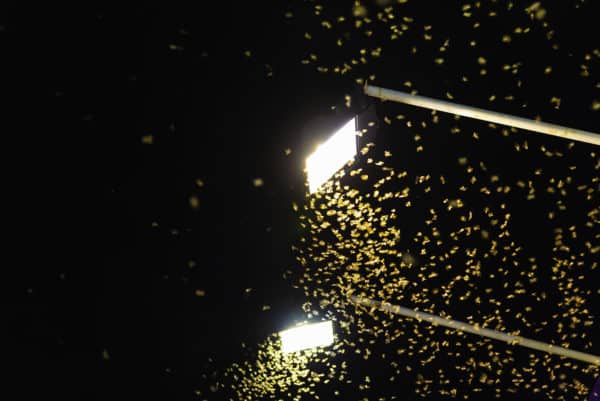
Swarming termites are also known as alates. Swarming termites are usually a seasonal nuisance as they cannot bite, sting, or even chew wood. While they don’t usually cause damage themselves, they do, however, indicate that there is an established colony nearby. These seasoned termites are capable of causing extensive damage to your home.
When dealing with swarming termites there are three important questions to ask: When do they swarm? Where do they swarm? Why do they swarm?
Termite swarming season varies by species. Subterranean termites swarm during daylight hours in the spring. Drywood termites swarm in late summer to early fall. Dampwood termites swarm in the summer. Most species of termites have specific conditions they wait for in order to start swarming. They usually wait for the day after a rainstorm, overcast weather, and wind speeds less than 6 mph.
Swarming termites are found anywhere termites colonize. Termites can swarm indoors or outdoors, although they cannot survive indoors as there is no soil for them to create their colonies in. Swarming termites are attracted to light and are often found near windows and light fixtures. As termites get ready to swarm, they prepare a swarm tube which they use to launch. When the conditions are right, they use the tube to swarm. After a brief flight which lasts for only a few seconds, they land and break their wings away from their bodies. They then pair with a mate. Those pairs that survive then create a chamber underground that they use to breed and the new colony is formed. Swarm launches are usually spread out over a few days with a large release on the first day and smaller launches on subsequent days.
The sole purpose of termite swarms is reproduction and expansion of the colony. The original termite colony reaches capacity and needs to expand. This is usually done once per year, hence termite swarming season. Both males and females swarm at this time. The number of termites that swarms each season varies depending on the size of the colony and the species of the termite.
Because a termite swarm indicates a nearby colony, homeowners should take precaution when one is spotted nearby. A thorough inspection of your home and property should be performed looking for signs of termites. This is also a good time to set up your annual termite inspection if you haven’t already. If you suspect you have a termite infestation, contact a professional pest control company who can inspect your property and set up a termite control plan.
7 Things You Didn’t Know About Cockroaches
How Much Does A Mosquito Treatment Cost?
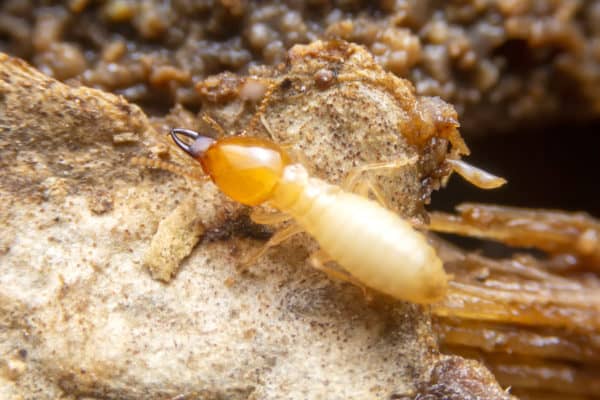
Home projects ramp up with the new year; out with old and in with new renovations. One thing homeowners should consider is pest protection that secures not only those new projects, but also their largest investment: their home.
Termites work in secret: staying out of sight, tunneling underneath homes, or even worse, inside the home’s structure. Depending on the region where the home is located, weather will play a crucial role in the type of termite species that can invade.
Subterranean termites are considered to be one of the most destructive types of termites. Found in every state in the U.S., they use “mud tubes” from the ground reaching up to the structure. They work to damage structures, weakening them bit by bit by eating 24 hours a day, every day.
Formosan termites are the most destructive of the subterranean species. Working and invading from the ground up, Formosans make up large colonies. Found mostly in the southeast, they can chew through insulation, utility poles, and even wires and cables.
Drywood termites are the sneakiest species as they do not need soil to survive. They are brought into homes in wood furniture, so caution and careful inspection should be taken when purchasing secondhand furniture.
Homeowners should take special care to eliminate areas of moisture as this is a huge attractant to the home for termites. An annual termite inspection with a licensed pest control company is highly recommended to find areas of damage and potential infestation sites and determine a proper prevention and treatment plan.
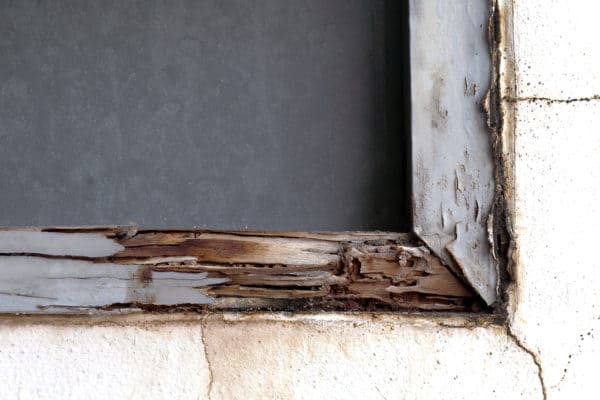
When it comes to protecting your home from termites, your best bet is not to rely on just luck – termite prevention is critical to minimizing or completely avoiding the costly destruction termites can cause to your home. In fact, some cultures consider termites in the home bad luck. These cultures see termites as an omen of death in the near future for the homeowner; the only way to escape this ill fate is to eliminate the termite colony or abandon the infested home.
If prevention fails, early detection is the next best thing. Termites can cause significant damage to your home while remaining undetected for years. For this reason, annual termite inspections can help identify these pests early, saving you from costly long-term damages.
Prevention is key. Here are a few tips for termite prevention in your home:
Termites will look for any way possible into your home in search of food. Try to reduce any soil to wood contact around your home by getting rid of any lumber, mulch, plants, or wood from your foundation. Try to also keep at least a 4 inch barrier between any mulch used in your landscaping and the side of your home. If possible, use pine straw instead of mulch as it is less appetizing for termites. Keep shrubbery trimmed back at least 12 inches from the walls of your home and get rid of any fallen branches, dead wood, or old tree stumps on your property.
Make sure your storm drains are directed away from the foundations and that they drain at least a few feet from foundations. Check for and repair any leaky faucets, pipes, or appliances and eliminate any other sources of excess moisture in your home. Keep sprinkler heads pointed away from foundations. If you have a crawlspace, consider crawlspace enclosure to not only help eliminate moisture under your home, but prevent mold, mildew, wood rot, and pests from getting into your home.
Most subterranean termites swarm during spring while drywood termites usually swarm in late summer and early fall. Be mindful of termite swarming season and make sure your outdoor lights are turned off at night. If possible, try to relocate any exterior lights to recessed areas away from doors and windows as swarmers are attracted to light.
Keep an eye out for signs of termites in your home. Discarded wings and evidence of frass are sure signs you have termite tenants. Other signs include blistering sheetrock, mud tunnels, cracks in your foundations, and a hollow sound when tapping on wood. Make sure the exterior of your home is well maintained to prevent these by inspecting and repairing wood siding and window frames.
Termites can be difficult to detect for long periods of time and even more difficult to get rid of once they are established. If you suspect you have a termite problem or if you want to get a step ahead of the prevention game, contact a professional pest control company who can set you up with annual termite inspections and, if necessary, a termite control plan.
Energy Saving for the Holidays
Should You Enclose Your Crawlspace in Winter?
Keeping Pests Away From Your Holiday Treats
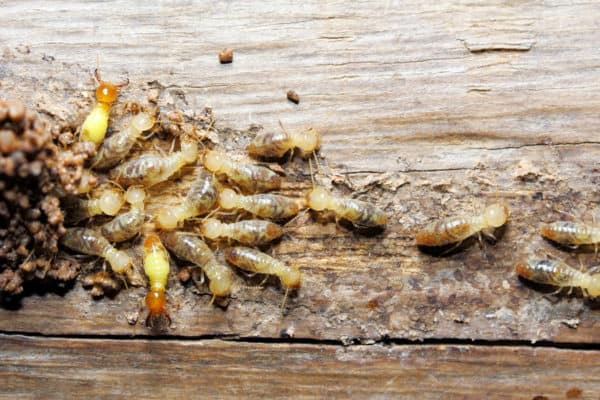
Termites can wreak havoc on a home without the homeowner even realizing it. By the time their presence is realized, the damage is extensive and costly. Termite colonies don’t just consist of hundreds of termites – they number in the millions! Termites can invade any type of home whether it is brick, stucco, wood, or other material. Termites will eat any material that contains cellulose, not just wood. These materials include cellulose insulation, framing timbers, and even drywall. An annual termite inspection can help prevent these devastating infestations by catching and eradicating them early, preventing significant damage and saving money in treatment and repair costs.
Termite inspections will typically begin with the inspector examining all possible points of entry to the home looking for common signs of termites. These signs include mud shelter tubes (pencil sized tubes termites use to travel), piles of frass (termite excrement), termite mazes on walls, discarded wings, etc. The inspector will also use a tool to gently tap on the interior and exterior walls of the home listening for hollow-sounding wood which in another sign of termite damage. The inspector will then check the exterior of the home, including crawlspaces, to check for wood to soil contact which is the easiest way for termites to gain access to a home. Wood to soil contact could be a stack of firewood that is too close to the home or deck posts not set in concrete. The inspector will also check trees, stumps, wooden retaining walls, fences, sheds, detached garages, and any other structures on the property. They will then notify you of their findings and recommend termite treatment options.
The best way to protect your home from termites is with a termite bond. This is a termite warranty between the termite company and the homeowner that is similar to a maintenance contract. They are usually made up of two components: an agreement for termite inspections during the lifetime of the bond and an agreement to provide termite control and treatment if termites are discovered. Bonds are especially important in real estate transactions. Most lenders will at a minimum require a termite inspection. Securing a termite bond provides you with a level of termite protection that can help you qualify for loans and also improve the marketability of your home.
If you suspect you have termites in your home or just want to be proactive in making sure these pests don’t invade your property, contact a professional termite control company and set up your annual termite inspection to give you peace of mind.
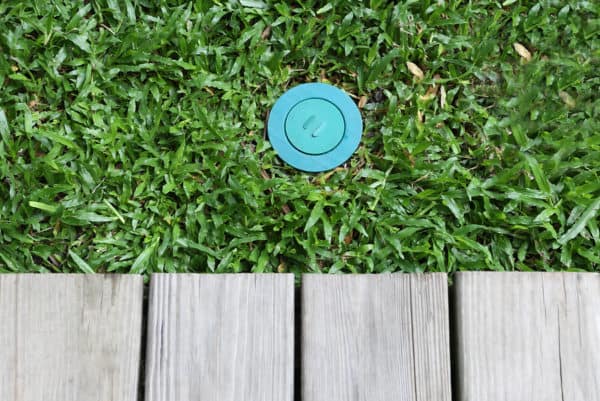
Termites can be a homeowner’s worst nightmare. Termites do their damage from the inside out and they often aren’t detected until after significant destruction has already been done. The signs of termites are often difficult to find until colonies are well established. In fact, termites cause an estimated $5 billion in damages each year in the United States. Yet many people still question if termite protection is worth the cost.
Structural damage caused by termites is the most expensive with an average cost of $3,000 for repairs. This amount varies depending on the extent and location of the damage that is caused. In addition to the structural damage caused by termites, cosmetic damage can also require repairs, costing an estimated $2,000 to fix things like discolored sheetrock, buckled floors, and peeling paint. This amount also varies depending on the materials that were damaged and the materials used to repair or replace it.
Termites must be exterminated before any repairs are done. The cost of a termite treatment not only include the termiticides or baits used in the treatment, but also the labor, training, and service hours for the termite exterminator. The average cost of termite control is $4 to $7 per linear square foot of your home. This estimate also varies based on the type of termite warranty provided, the location of your home, and the type of treatment required.
Unfortunately, most homeowner’s insurance policies do not cover termite damage and sellers are usually responsible for covering termite damage during the sale of a home. This can vary so it is always a good idea to check your state regulations. This also usually includes a termite inspection prior to the sale of the home.
Knowing the potential costs of termite damage and repair is reason enough to invest in termite protection. What options do homeowners have when a homeowner’s policy doesn’t cover termite damage? A termite bond or termite warranty is your best bet. A termite bond is a warranty between a homeowner and a termite company that functions as a maintenance contract for termite prevention, damage, and repair. Termite warranties vary by company, but they generally include an agreement for annual (or more often) termite inspections during the lifetime of the warranty, an agreement to provide treatment if termites are discovered (often at no additional charge to the homeowner), and in some cases an agreement to repair damages. Not all homes, however, qualify for these repair bonds so always check with your termite control provider about this.
A termite warranty provides you with peace of mind against termite damage. The warranty guarantees that the pest control company will continuously inspect your home and make sure that new infestations are discovered before they can proliferate. Termite warranties are also beneficial when buying or selling a home as they are often required before a sale can occur. Lenders will often not approve mortgages for at-risk homes without a termite bond. Only certified pest control companies can issue termite warranties. Yearly costs typically run $300-$400 for the warranty coverage, which includes the annual termite inspection.
Click here to schedule a free termite inspection.
What is the Difference Between Traditional and Green Pest Control?